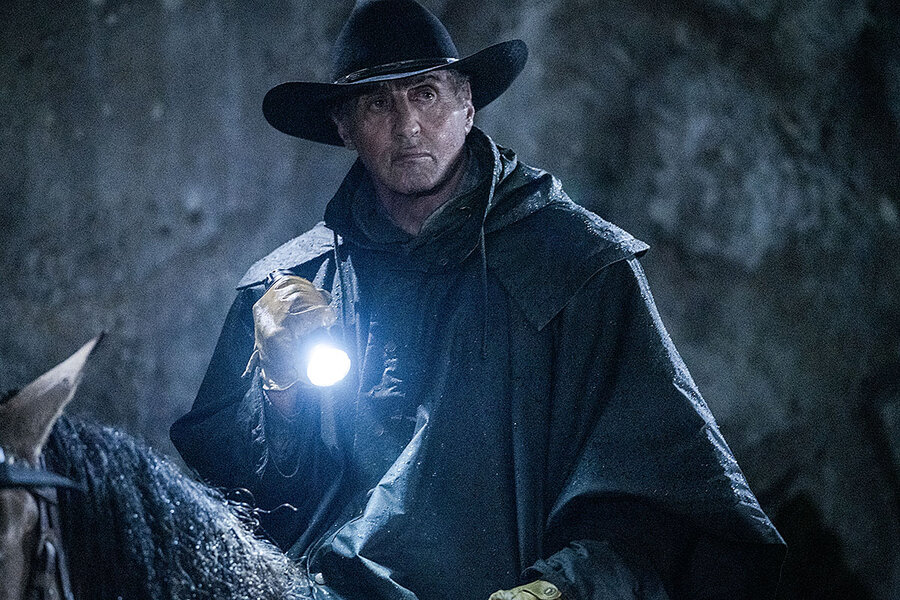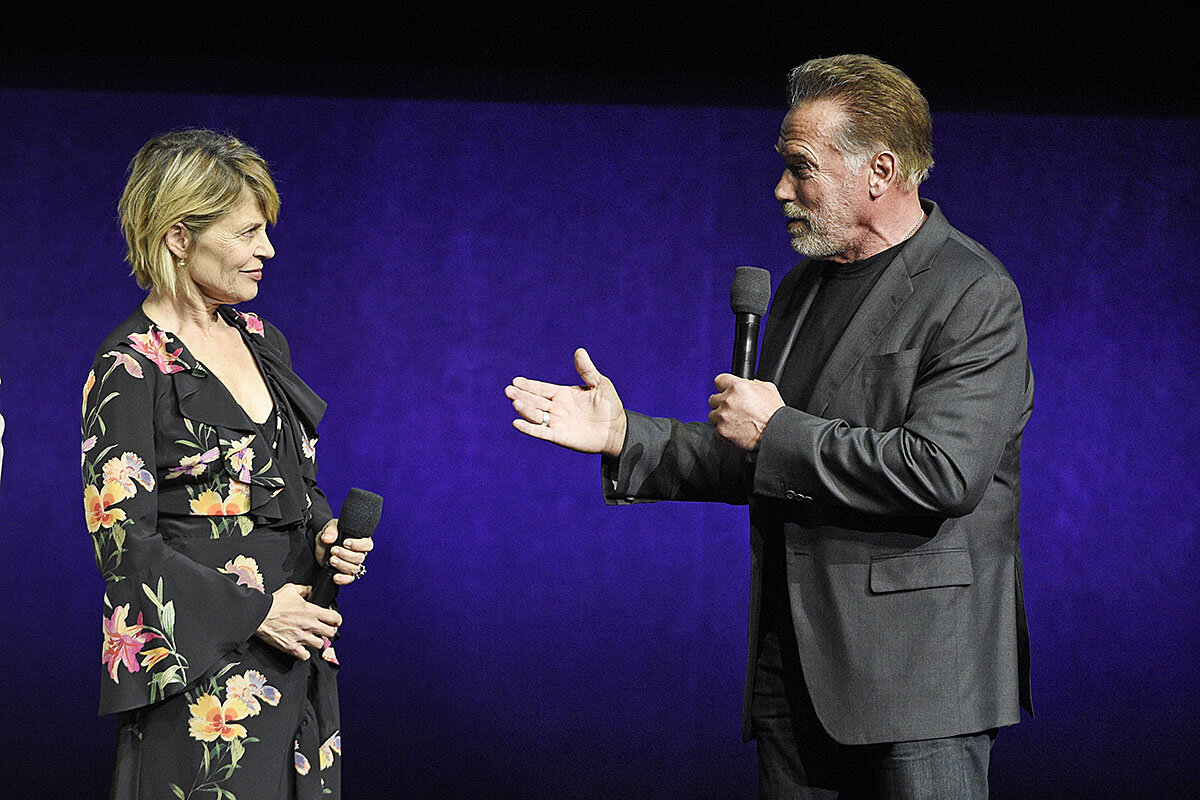More gray hair on screen: Hollywood’s subtle shift on age
Loading...
As Americans live longer and more active lives, cinematic portrayals of those who are retirement age or nearing it are beginning to reflect that shift.
Between 1996 and 2015, the average age of action stars was 40, according to movie data analyst Stephen Follows. But in 2015, the last year he tracked those figures, it spiked to 48. With the majority of baby boomers still in the workforce, it’s apt that legendary characters are heading back to work. September’s “Rambo: Last Blood” features Sylvester Stallone, November’s “Terminator: Dark Fate” has Linda Hamilton and Arnold Schwarzenegger, and next year’s “Picard” has Patrick Stewart reprising his role as a “Star Trek” captain on CBS.
To be sure, Hollywood continues to traffic in stereotypes of older people. But cultural critics say that positive portrayals can help influence how seniors perceive their own potential. “Images on screen do affect us in our self-images and what we think we can’t do and should do,” says Tim Appelo, film critic for AARP The Magazine. “We can’t all be action heroes, but watching Liam Neeson and Tom Cruise and Helen Mirren do some heroics gives us the strength to do what we want to do in our own lives.”
Why We Wrote This
If Tinseltown thinks differently about age, does that mean other people will, too? A flurry of new offerings with seasoned stars raises questions about a changing societal view.
When Estelle Getty starred alongside Sylvester Stallone in “Stop! Or My Mom Will Shoot” (1992), the joke was that a senior could be a gun-toting hero. Nowadays, Mr. Stallone is not only older than “The Golden Girls” comedian was when she filmed that role, but he’s still playing an action hero – and not for laughs.
Mr. Stallone is among several veteran actors who are bringing iconic heroes out of retirement. In September’s “Rambo: Last Blood,” the titular hero rises from his front-porch rocking chair to fight invaders at his ranch. Similarly, trouble comes knocking for a grizzled humanoid cyborg (Arnold Schwarzenegger) who lives in a backwoods cabin in November’s “Terminator: Dark Fate.” And in the 2020 TV series “Picard,” a former “Star Trek” captain (Patrick Stewart) leaves his vineyard to reengage with intergalactic politics.
It would once have been unthinkable to greenlight action projects featuring septuagenarian actors in lead roles. But today, retirement age looks very different from what it did a few decades ago. As Americans live longer, healthier, and more active lives, on-screen portrayals of seniors are beginning to reflect that shift. To be sure, Hollywood continues to traffic in stereotypes of older people. But cultural critics say that positive portrayals can help mitigate societal fears about aging and also influence how seniors perceive their own potential.
Why We Wrote This
If Tinseltown thinks differently about age, does that mean other people will, too? A flurry of new offerings with seasoned stars raises questions about a changing societal view.
“Images on screen do affect us in our self-images and what we think we can’t do and should do – what’s appropriate to our age,” says Tim Appelo, film critic for AARP The Magazine. “There’s a phrase from William Blake, the poet: ‘mind-forged manacles.’ People are troubled by manacles forged in their own minds. And I think that TV and movies helped to break those shackles of illusion. ... We can’t all be action heroes, but watching Liam Neeson and Tom Cruise and Helen Mirren do some heroics gives us the strength to do what we want to do in our own lives.”
Back to work, like boomers
At a time when the majority of baby boomers are still in the workforce, it’s apt that many legendary cinematic characters are heading back to work. Older boomers are staying in the workforce longer than previous generations. Since the turn of the millennium, global life expectancy has increased at the fastest rate since the 1960s. Consequently, concepts of retirement and longevity are evolving – even in Hollywood. It’s telling that the premise of “Cocoon,” a 1985 science fiction movie about how alien powers rejuvenate residents in a retirement home, now seems antiquated.
“One of the big jokes was now that they have encountered aliens they’re out dancing,” says Tim Gray, senior vice president for Variety. “If you said to somebody [today], ‘Hey, I know one of my neighbors is 70 years old and goes out dancing,’ people would say, ‘Yeah, OK, where’s the story here?’”
For actresses over age 40, it’s still a struggle to find lead roles in an industry predisposed toward ingénues. But in certain genres, that age no longer means what it once did. Between 1996 and 2015, the average age of action stars was 40, according to movie data analyst Stephen Follows. But in 2015, the last year he tracked those figures, it spiked to 48. Audiences are embracing action films featuring stars who are older than those averages, including Charlize Theron and Sandra Bullock – not to mention Daniel Craig, Jason Statham, Keanu Reeves, Brad Pitt, Denzel Washington, Clint Eastwood, and Mr. Neeson.
To that list, add Linda Hamilton. In “Terminator: Dark Fate,” the cool heroine battles robots with her bazooka. Indeed, the popularity of veteran actors is sometimes aided by an audience appetite for nostalgia. Cases in point: Mr. Cruise is back on the highway to the danger zone for “Top Gun 2.” Who you gonna call for another “Ghostbusters” sequel? Dan Aykroyd, Bill Murray, and Sigourney Weaver. Harrison Ford, who has already reprised his iconic roles in recent sequels to “Star Wars” and “Blade Runner,” is dusting off his fedora for a fifth “Indiana Jones” movie.
Reversing negative messages
Inevitably, news about these types of roles conjure up the same sort of jokes that follow the Rolling Stones when it tours. Messages of ageism can be subtly harmful, says Becca Levy, director of the social and behavioral sciences division at the Yale School of Public Health.
“In our experimental research, we bring older people into the laboratory and we expose them on a computer screen to either positive or negative age stereotypes, and we found that when we activate negative stereotypes, it can lead to different kinds of outcomes including worse memory performance, worse balance, and slower walking,” says Professor Levy. “And then we found when we expose people to positive age stereotypes on a computer screen and we measure variables before and after they’ve been exposed to the age stereotypes, we do find a shift in performance.”
Stories on screen have a social and cultural pedagogic effect, agrees Sally Chivers, director of the Trent Centre for Aging & Society in Peterborough, Ontario. Too often, Hollywood associates age with decline, she says – especially movies about dementia, which stoke fears of aging by insinuating that this could happen to anyone. But screen stories can also have a positive influence. She points to how the Netflix series “Grace and Frankie,” starring Jane Fonda and Lily Tomlin, has shaped how some seniors view late-life romance. Professor Chivers’ book “The Silvering Screen” chronicles how Hollywood has also gotten better at producing stories about the perspectives of older characters even if the stories, such as romantic comedies, are formulaic.
“If those plots are going to be what dominate, why not have age be part of it rather than this kind of either grotesque horror story, like in ‘What Ever Happened to Baby Jane?’ [from 1962] or humor. Even the ‘Grumpy Old Men’ are just kind of a joke to move the plot along,” says Professor Chivers, referring to the 1993 comedy starring Walter Matthau and Jack Lemmon. “We’ve come a long way since then.”









